Cry of the City

Brief Synopsis
Cast & Crew
Robert Siodmak
Victor Mature
Richard Conte
Fred Clark
Shelley Winters
Betty Garde
Film Details
Technical Specs

Synopsis
Hoodlum Martin Rome, who has killed a policeman during a robbery, is in a hospital prison ward about to be operated on, and is being prayed over by his parents, brothers and sisters and a priest. New York City police lieutenants Vittorio Candella, who grew up in the same Italian neighborhood as Rome, and Jim Collins wait outside to question him. Niles, a lawyer, also wants to see Rome to ask him to confess to his involvement in the killing of a Mrs. de Grazia and thereby save an innocent man who has been arrested for the crime. Rome refuses to cooperate, but later, as he recovers from the surgery, Candella interrogates him about a ring found in his possession, a ring stolen from Mrs. de Grazia, who was tortured until she revealed the whereabouts of her jewels and was then strangled. Although Rome is headed for the electric chair for killing the police officer, he denies involvement in the de Grazia murder and says he won the ring in a crap game. After Candella leaves, Rome asks his middle-aged nurse, Miss Francis Pruett, to take a note to his girl friend, Teena Riconti, telling her to go into hiding as she may be arrested as an accomplice. When Niles offers to defend Rome in exchange for his confession to the de Grazia killing, Rome again refuses. Candella then visits Rome's parents, whom he knows, looking for information about Rome's girl friends. Meanwhile, Rome has been moved to a prison, where a trusty offers to help him escape. After Rome escapes from his cell by means of a duplicate key, Candella and Collins are tipped off that Rome is at Teena's place, but find only his younger brother Tony there. Rome goes to Niles' office, threatens him with a knife and, while looking for cash in his safe, discovers the de Grazia jewels in a hidden compartment. Niles tries to shoot Rome but accidentally shoots his secretary and is stabbed to death by Rome, who takes the jewels and a gun and heads to his parents' place. Although his father disowns him, his mother tries to help but cannot understand why he kills. Another of Rome's girl friends, Brenda, drives Rome to meet a Madam Rose, but as he is still suffering from the after-effects of the surgery, he passes out en route. Brenda locates an unlicensed doctor, Dr. Veroff, who treats him as they drive around. Rome tells Rose he knows she was in on the de Grazia job and that Niles gave him the jewels, which he now wants to trade for a car, $5,000 and a way out of the country. Rose agrees to meet him the next day to make the exchange. Meanwhile, Candella questions several unlicensed doctors, including Veroff, who admits he treated Rome. Rome phones Candella at police headquarters in an attempt to double-cross Rose, but when Rose and Rome meet, she draws a gun on him and together they go to a locker in a subway station where Rose is arrested by two plainclothesmen. During the ensuing fracas, Rose accidentally shoots Candella and Rome escapes. Later, Lt. Collins discovers that Candella has walked out of the hospital where he was being treated and has gone to Miss Pruett's house, looking for Teena. She, however, has left to meet Rome at a church. Rome, meanwhile, asks Tony to take their mother's savings money and bring it to him. When Rome tells Teena that they are going to leave the country, she responds that she no longer loves him and will not go with him. Candella then finds them, and after telling Teena to go home, prepares to take Rome in. As they leave the church, Rome hands his gun to Candella but then slugs the ailing cop and limps away. Candella shoots him, and Tony returns to find his brother dead. As the police arrive, Tony confesses that he could not steal from his mother, and after he helps Candella into a police car, he cries.

Director
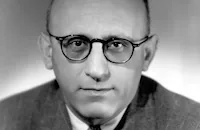
Robert Siodmak
Cast

Victor Mature

Richard Conte
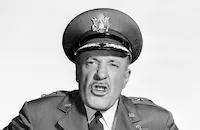
Fred Clark

Shelley Winters

Betty Garde

Berry Kroeger
Tommy Cook
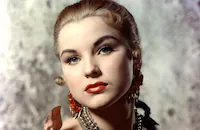
Debra Paget
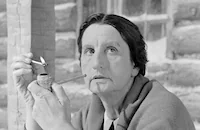
Hope Emerson

Roland Winters
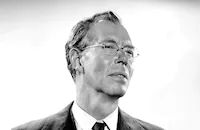
Walter Baldwin
June Storey

Tito Vuolo
Mimi Aguglia
Konstantin Shayne

Howard Freeman
Dolores Castle
Claudette Ross
Tiny Francone
Elena Savonarola
Vito Scotti
Thomas Ingersoll
Robert Karnes
Charles Tannen
Oliver Blake
Antonio Filauri
Joan Miller
Ken Christy
Emil Rameau
Eddie Parks
Charles Wagenheim
Kathleen Howard
John Cortay

George Beranger
Harry Carter

Jane Nigh
Ruth Clifford
Davison Clark
Tom Moore
Michael Stark
Martin Begley
Michael Sheridan
Tommy Nello
George Melford
Helen Troy
Robert Adler
Harry Seymour
Crew
Lloyd Ahern
Michael Audley
Louis Bacigalupi
Jasper Blystone
Sid Bowen
Bonnie Cashin
Linda Cross
Eugene Grossman
Earle Hagen
Roger Heman
Albert Hogsett
Harmon Jones
Ernest Lansing
Eddie Ledgerwood
Charles Lemaire
Thomas Little
Paul Lockwood
Harry Maret
Cliff Maupin
Pat Mcnally
Richard Murphy
Alfred Newman
Lionel Newman
Ben Nye
Edward Powell
Fred Sersen
Sol C. Siegel
Robert Snody
Herbert Spencer
Rose Steinberg
Lyle Wheeler
Darryl F. Zanuck

Film Details
Technical Specs

Articles
Cry of the City
Beginning with Phantom Lady (1944), he brought shadowy atmosphere, psychological complexity and suspenseful direction to an unprecedented run of superb crime dramas and mysteries, including The Killers (1946), Criss Cross (1949) and The Film on Thelma Jordan (1950), starring some of Hollywood's most famous (and noir's most iconic) performers.
Cry of the City (1948), starring Victor Mature as Lt. Candella, an Italian-American police detective in pursuit of small-time gangster and cop killer Martin Rome (Richard Conte), was made for 20th Century Fox. The studio had found success in a series of crime thrillers that were based on true stories and shot on location to get a sense a realism, films like Boomerang (1947) and Call Northside 777 (1948). Studio head Darryl F. Zanuck developed this new project, based on the novel The Chair for Martin Rome by Henry Edward Helseth, as another film in the same manner.
With a script penned by screenwriting legends Ben Hecht and Charles Lederer, the project was retitled The Law and Martin Rome and set for a shoot in San Francisco with Lon McAllister in the role of the criminal Martin. Before the cameras rolled, the location was moved to New York City, the script was rewritten by Richard Murphy and Richard Conte and Victor Mature were signed for the lead roles, albeit not the same ones they eventually played. Conte was initially cast as the cop and Mature the criminal, but they swapped roles when Mature decided that, coming off Kiss of Death (1947), it would be a better career move not to play yet another criminal. All the pieces were in place, including plans to shoot key scenes on location in New York City, when Siodmak was brought aboard.
According to film noir historian and Noir Alley host Eddie Muller, Siodmak didn't like taking the cameras on location. He preferred the control of the film studio, but nonetheless he used the New York City locations beautifully. The urban atmosphere of city traffic and the scuffed and worn authenticity of real storefronts and sidewalks gives the film a charge of realism. But only some of the exteriors were shot in New York, mostly establishing shots essential to identifying the city. Los Angeles doubled for the Big Apple in many street scenes, notably dramatic nighttime sequences where Siodmak applied his expressionist style of heightened shadows and pools of light on rain-slicked streets. And one of the film's most visually dense urban street scenes is created on a studio soundstage strewn with neon and set against a forced perspective city skyline.
As Martin's innocent young girlfriend, Debra Paget made her film debut at the age of 15 (studio publicity fudged her age in the press releases, making her 18). Shelley Winters has as small but splashy role as a loyal and not too bright showgirl who helps Martin hide out. Fred Clark, fresh off playing a crooked businessman in Ride the Pink Horse (1947), switches gears to play Mature's exasperated partner, bringing a little understated humor to the film. And though it is not her first time in front of a camera, Siodmak essentially introduced Hope Emerson to movie audiences as the menacing Mama Rose. Siodmak gave the former nightclub singer a dramatic, dynamic entrance in the film and guided her through a memorable performance that gave her a whole new career as a character actress in the second act of her life. She stayed busy on the big screen, where she earned an Oscar nomination for the prison drama Caged (1950), and on TV, where she created the role of Mother on the stylish small screen noir Peter Gunn, before passing away in 1960.
The film was in pre-production under the title The Law and Martin Rome when Baltimore, Maryland attorney Morton E. Rome contacted the studio. He objected to seeing his own name plastered over posters and marquees. "It is my opinion that the showing of such a picture...would damage my own personal career and hold me up to ridicule," he wrote in his letter, and made clear his intentions to "engage in litigation over this matter" unless they changed the title. The studio, already under pressure from theater owners unhappy with the title, renamed the film Cry of the City.
If you think you recognize the film's signature theme, chances are you have. The score is by the celebrated composer Alfred Newman, the longtime music director at 20th Century Fox, and he uses his iconic "Street Scene" theme, a Gershwin-esque composition that he composed for the 1931 drama Street Scene. He reprised the theme in numerous films, from the film noir classics I Wake Up Screaming (1941) and Kiss of Death (1947), both coincidentally starring Mature, to the Oscar-winning drama Gentleman's Agreement (1947) and splashy Technicolor romantic comedy How to Marry a Millionaire (1953). Though it has been used in all genres, it has become an unofficial anthem of film noir thanks to its frequent appearance in Fox's urban crime dramas.
Director: Robert Siodmak
Producers: Darryl F. Zanuck, Sol C. Siegel
Screenplay: Richard Murphy, based on a novel by Henry Edward Helseth
Cinematography: Lloyd Ahern
Editing: Harmon Jones
Art Direction: Albert Hogsett, Lyle Wheeler
Music: Alfred Newman
Cast: Victor Mature (Lt. Candella), Richard Conte (Martin Rome), Fred Clark (Lt. Collins), Shelley Winters (Brenda Martingale), Debra Paget (Teena Riconti)
Sources:
Audio commentary by Eddie Muller on the Cry of the City Blu-ray release, Kino Lorber, 2016
"Robert Siodmak," Michael Walker, The Book of Film Noir (Continuum, 1992)
AFI Catalog of Feature Films
IMDb
By Sean Axmaker

Cry of the City
Cry of the City on DVD
Cry of the City is not as well known as Siodmak's The Killers (1946), Criss Cross (1949), and The Film on Thelma Jordan (1950), all of which star some of Hollywood's most famous (and noir's most iconic) performers, or his early, shadowy low-budget mystery Phantom Lady (1944), but it should be. It's a gangster film seeped in shadows, corruption, and psychosis, starring Victor Mature as Lt. Candella, an Italian-American police detective who takes the pursuit of small-time gangster Martin Rome (Richard Conte) personally. They grew up together in Little Italy and Candella doesn't buy Martin's excuses of poverty and culture for turning to a life of crime, not with such salt-of-the-Earth parents who treat Candella almost like family. More to the point, he hates how he's become an outlaw hero to the kids in the neighborhood and especially Martin's adoring kid brother, Tony (Tommy Cook). When Candella goes knocking on doors for witnesses, he gets them slammed in his face. In a slum where no one trusts the cops, Martin's brazen defiance makes him a Robin Hood, even if he fails to share any of his ill-gotten gains with the poor.
The film opens with Martin unconscious in a hospital, wounded in a shoot-out that left a policeman dead. When he's awake he's a glib, smart-talking guy, working his grinning charm and sardonic wit on the police (who have his ward under guard) and the hospital staff alike, and he has no illusions about his fate. He confesses to the killing as if it was a simple matter of self-defense--the cop was in his way--and he fully expects to get the electric chair, but he's adamant that he had nothing to do with a recent jewel heist. After an oily lawyer (Barry Kroeger, all smug corruption) visits with an offer to pay him off in exchange for taking the rap for the heist (he's going to the chair so what does he have to lose?), Martin starts hatching a plan. He's no one's patsy, especially not some thief trying to pin a robbery rap on him, and he escapes to track down the real thieves and, with luck, get away with his sweetheart, the midnight angel who hovered over his hospital bed and disappeared without a trace. While Martin slips through the city with a bullet in his side, Candella goes searching for this mystery girl.
Victor Mature gives one of his best performances here, bringing a sense of gravity to a dour and humorless role, the martyr fighting the good fight in a neighborhood that has turned its back on him. Conte gets the more colorful part, flashing a grin as the wise guy hood spreading the message the crime pays and pays well, and his staccato patter has a singsong confidence that slips into arrogance. He's the classic noir gangster, a mercenary narcissist who fools himself into thinking he has a code and then breaks it when he gets desperate. Yet they are reverse reflections of one another and their journeys are even mirrored. Before the film is over, Candella too will be wounded and hospitalized and forces escape to complete his mission.
Shelley Winters has as small but splashy role as another of her brassy dames, loyal and not too bright, helping the wounded Martin find a doctor off the books and fetching whisky from a bar for a backseat surgery: medical disinfectant by the shot. And Hope Emerson is even more memorable as Mama Rose, a hatchet-faced masseuse ready to choke the life out of Martin but for certain incriminating letters he has in his possession. Siodmak shoots the scene with a claustrophobic intimacy that doesn't seem to leave room for escape.
Cry of the City is one of Siodmak's most visually striking films. He took his cast and cameras on location for some of the New York street scenes rather than shooting on the backlot where his control was greater. The urban atmosphere of city traffic and the scuffed and worn authenticity of real storefronts and sidewalks gives the film a charge of realism but Siodmak forgoes docurealism for his beloved expressionist style. He heightens the tension of Martin's escape through the city with webs of shadows and splashes of reflected light sparkling in the streets at night. Yet one of the most visually dense urban street scenes is created on a studio soundstage strewn with neon and set off with a forced perspective city skyline. And for the dramatic showdowns and standoffs, Siodmak clears the frame of urban bustle and clutter and picks the characters out of the shadows.
Imagery and style aside, what makes this such classic noir is the world of corruption and betrayal and desperation. Conte's increasingly jittery performance, his smarmy confidence giving way to panic and predatory self-interest, meets Mature's stoic stillness, the stocky Mature towering over the smaller, gnarled-in-pain Conte like a judgment. If there's justice in this film, it's pitiless and unforgiving, and no studio-mandated happy ending can sweep away the doom and desperation and tawdry compromises of the film's characters.
This comes to disc via the 20th Century Fox Cinema Archive, the manufacture-on-demand line of DVD-R releases from the studio vaults. The quality of releases from this line has been variable, to say the least, but this is one of the better-looking releases, mastered from a good print with minor scuffing but no damage. The contrasts are strong and the image largely clean and sharp, which serves the atmosphere of the film very nicely. There are no supplements.
By Sean Axmaker
Cry of the City on DVD
Quotes
Trivia
Notes
This film's working titles were The Chair for Martin Rome and The Law and Martin Rome. Although early January Hollywood Reporter production charts list James B. Clark as film editor, the extent of his contribution to the released film has not been determined. According to documents in the Twentieth Century-Fox Records of the Legal Department and the Twentieth Century-Fox Produced Scripts Collection at the UCLA Arts-Special Collections Library, the studio purchased rights to Henry Helseth's novel The Chair for Martin Rome in March 1947 for $22,500. A first draft screenplay by Ben Hecht and Charles Lederer was ready by early June 1947. John Monks, Jr. contributed additional drafts, but the final draft was the same as that turned in by Richard Murphy in early December 1947. The extent of the contribution of the earlier writers to the released film has not been determined. In the novel, neither of the principal male characters was of Italian ancestry. The police lieutenant was named "Saul Mendel," while "Martin Rome's" ethnicity was unspecified although he was described as a tall, blonde guy with blue eyes.
An undated studio press release in the AMPAS Library, probably from mid-1947, announced Lon McCallister in the role of the "baby-faced killer." At that time, the production was to be shot in San Francisco. According to another press release, Victor Mature and Richard Conte were originally cast in the other's role, but when it was deemed unwise for Mature to play another criminal, Conte, whose two previous roles had been highly sympathetic, assumed the hoodlum's role. Randy Stuart and Lisa Howard were originally cast as "Teena." Hope Emerson made her screen debut in the picture. Although set in New York, most of the film was shot in Los Angeles. The hospital scenes, for example, were shot at Los Angeles County Hospital. However, in mid-March 1948, the production moved to New York for a few days of shooting on Sixth Avenue, Hester, Mott and Grand Streets. Additional New York filming took place near King and Houston Streets and in a subway station at Fourth Avenue and Eighteenth Street
The Call Bureau Cast Service and the studio's cutting continuity list characters played by Eddie Parks, Martin Begley and George Melford but they were not seen in the viewed, incomplete print. Various reviews incorrectly list the character portrayed by Betty Garde as "Mrs. Pruett." Two sequences included in the film's cutting continuity, but missing from the print viewed, feature Shelley Winters: In her first appearance in the film, she visits a photographic studio in an attempt to locate Madam Rose, who had been in show business, for Rome. Later, when Dr. Veroff treats Rome, he asks "Brenda" to get him some alcohol and she goes into a bar where a salesman tries to pick her up.
Early in June 1947, as the studio was about to release the film under the title The Law and Martin Rome, a Baltimore, Maryland attorney Morton E. Rome wrote to the studio, "It is my opinion that the showing of such a picture...would damage my own personal career and hold me up to ridicule....I have no desire to engage in litigation over this matter, unless I am forced to. If you are willing to change the name of the picture, I shall be happy to forget the whole affair." Studio inter-office correspondence reveals that, as exhibitors were reacting unfavorably to the current title, a decision was made to change the title to Cry of the City. Alfred Newman's score includes another re-use of his Street Scene theme.














